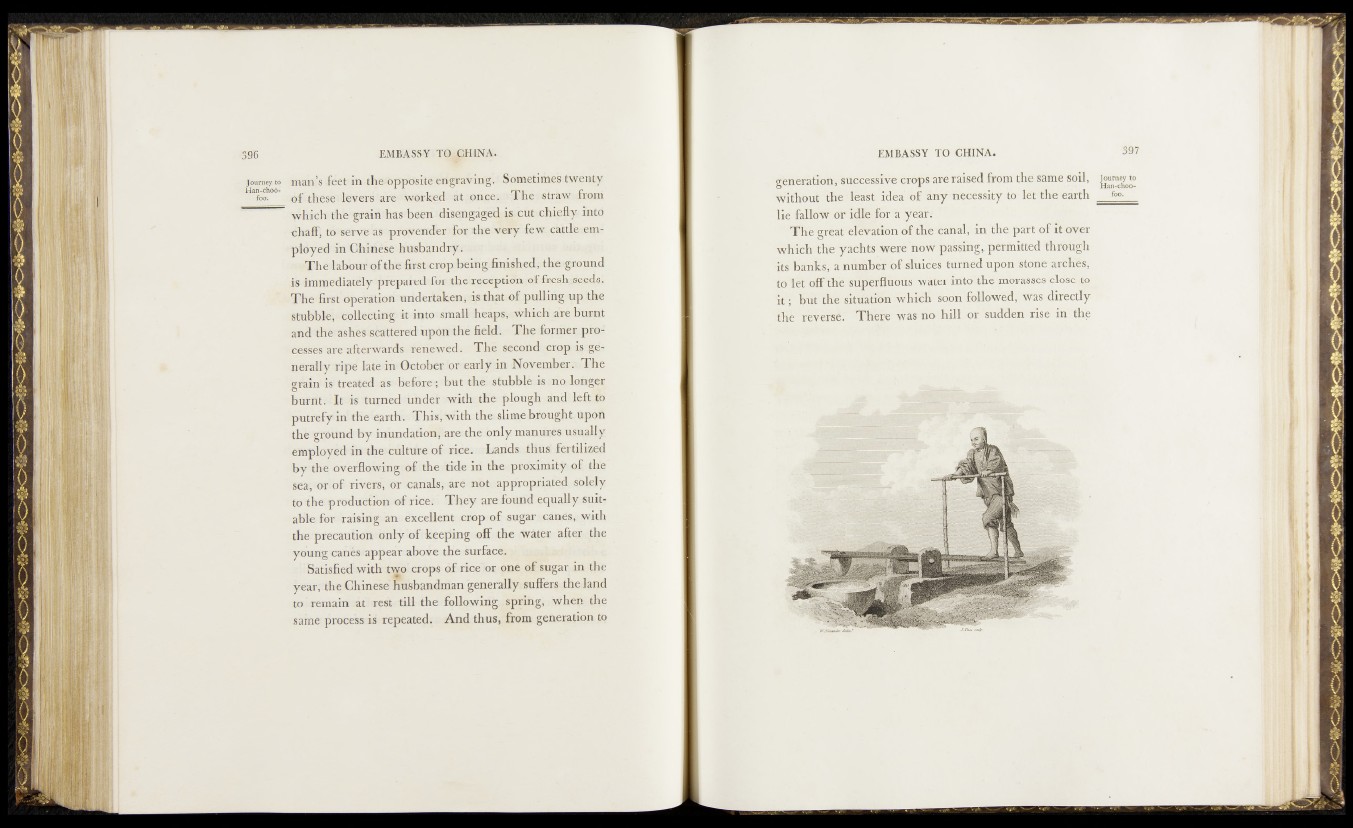
journey to ;man’sdb?ét in the-oppbsite&rigratingi jj Sometimesitswenfcy
fbos o f tiffésënleVers tar&iworbed »at ;pag^aTHèï«farè»vï>ifEOin
*1 #Mcto%hegFainhas -been :dis®ga^%»cüt>.cJ>ip|^ feto
chaff; fo^èrvëbs provendeS*ïbï ithe very fow^ctifetfÉi8i|É
pfoyed -in Chinèsehusbandryi I(
t . «is imra&diately^Tfepafedifdr the receptionr©f foeshjffeeds;
* I Thmfir&e Operation undertaken, % thfit,®fijpuffihgjyp the
stubble, ctffeötinfpit
and the* ashès shattered upon thé fieldi The former pro-
cesses “are»afterwards renewed. Th e sëcoïM* crop ^ vér
neraily ripe ktedn October o r early in November .oThe
grain'is treated as before- but the stubble ism ftfo tt® |
ïötót» It is turned under w ith th e plough anffflewli
pbtrfefyin the earth. This, with the slime brought, upofi
the ground fey inundation pare; the onlymamri;es us]u,#lp
employed in the culture of rice. Lauds*; tHusbfortff ked
by the oveiflowing of the tide in the proximit-y the
timers, or 0»nals^#embt appropraptedufijlftly
to the production o f ricei They areiburidt equaffy suit-
able for raising an excellent crop of sugar canes, = with
the precaution only of keeping off the water affer^he
young cahésrappear above th e surface.. si
Satisfied" with two crops of rice lor one of Sugar in the
year;theGhinCTdmisbandman generally suffers th ek n d
to " remain at; rest till the following spring, \^hen tlie
same process is repeated. And thus, from generation tQ
generation.-'au^ce^iye crops are raised from the same soil, gwog»
without the least idea‘,%f’any^hecessity to let th e earth fo°-
lie' fallow or idle forfeyelr'/ f~
Theifreat elevation of the canal, in the part of it over
“which ih e vy&chts were now^asitig, permitted through
its banks, a number' oMuiee's'turned uponlstdne arches,
t o # o f f the'fnpeiflubffs^wllter into the mbra'sses"close t-o
ft?| but the situation which sonnffbilowed'/ was directly
th i rrfeverse. T h .^ ’ was no hilf§fr 'sudden rise* in the